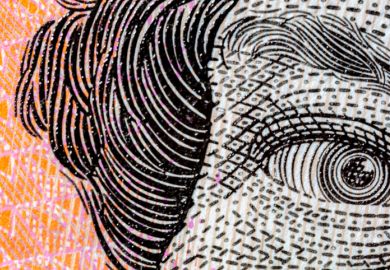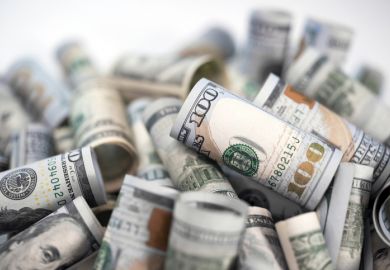Famous women economists are rare. The first woman president of the American Economic Association is now in office. Well-known economist Deirdre McCloskey, formerly Donald McCloskey, reflects on the history of women in economics
Aristotle wrote that a society wastes half its human resources if it neglects its women. You would think that such an argument for efficiency would have appealed to economists, but economists are mostly men, sharing the frailties of that office. Women of Value, a collection of ten essays on the history down to 1940 of women economists in Britain and the United States, tells how the little society of an increasingly professional economics neglected its women, yet how the women achieved none the less.
Economists do not give a fig for olden times, and 1940 is inconceivably olden in their minds. Why bother, then? Well, for one thing, if economics is going to get beyond its present limitation to boys' rules of play, it needs to reflect on women of value, and on women's values.
For another, as one of the editors, Robert Dimand, points out, the claim of many economists that all worthwhile economics is already embodied in the latest journal article by one of the boys is patently false. The essay by Mich le Pujol on Harriet Taylor (1807-58), colleague and wife to John Stuart Mill, and the essay by Mary Ann Dimand on Charlotte Perkins Gilman (1860-1935) show thinking about women and marriage and the household better as economics than most productions on similar topics in last year's Economic Journal and the American Review. Thus Gilman in Women and Economics (1898): "The labor of women in the house . . . enables men to produce more wealth . . . and in this way women are economic factors in society. But so are horses . . . The horse is not economically independent, nor is the woman."
The present volume is filled with stories of women's lives in the science of value, from Jane Marcet, author of the bestselling economics book of the early 19th century, down to still active women economists, such as Anna Schwartz. As Harriet Martineau wrote in 1934, even economics is best told by stories rather than by the male method of abstract proposition, "not only because [narrative in economics] is new, not only because it is entertaining, but because we think it is the most faithful and most complete [method]".
The fact told faithfully by the stories - known to every woman but still puzzling to some men - is this: a life of teaching and scholarship in economics, as in all fields dominated by men and husbands and brothers, was once almost impossible for a woman, and remains hard. For example, Mary Paley Marshall (1850-1944), as Rita McWilliams Tullberg very beautifully shows in her essay, had done her feminist duty by achieving distinction in the moral sciences tripos in 1874 and becoming "the lady lecturer from Newnham". To expect her to have pieced together a research career as well, against the conventions and fellowships of the day, and against the conviction of her economist husband Alfred that research would debilitate the mothers of the race (Mary never agreed), would be anachronistic.
Alison Cornish Thorne, in a memoir nearly worth the book's considerable price, tells of announcing in 1937 to Elizabeth Hoyt, her thesis supervisor at Iowa State, that she was betrothed to agronomist Wynne Thorne. Said Hoyt, ladylike in her expletives, "Oh, shoot!". Everyone knew that marriage ended a research career, and that nepotism rules then in force would make it impossible for Alison to get the job she deserved at her husband's institution.
What chiefly intervened was the womanly duty of care, a topic just now coming back into economics, chiefly in the work of Nancy Folbre, two centuries after Adam Smith proposed it and Jeremy Bentham disposed of it. Thorne says of a contemporary, Eleanor Pank- hurst, also mentored by the extraordinary group of home economists at Iowa State University and the University of Chicago: "Pankhurst returned home to Massachusetts because her mother was unwell. As for me, I had babies". That was The Fact.
In 1996, the book is not startling, after so many studies in other fields documenting the dismal Fact, and documenting all the baby facts that The Fact has spawned. We know already from Evelyn Fox Keller and Sandra Harding and others that early in the 20th century women, mostly unmarried, increasingly participated in science, breaking the gender bar of the 19th century - though in economics the women were often segregated in women's colleges and in home economics. Women did not segregate themselves: they did not deal exclusively with "women's" issues. "By 1935," writes Forget in her essay, "men and women were virtually indistinguishable insofar as area of specialisation was concerned."
Yet a "woman's way of knowing" often characterised their scholarly contributions, such as the persistence among women of methodical observation, a willingness to listen with care apparent in Marie Curie's work in physics, or Barbara McClintock's or Rosalind Franklin's work in biology. In economics one can see it in the work of Margaret Reid of Iowa State and the University of Chicago, Dorothy Brady of the University of Pennsylvania and the Women's Bureau, or Anna Schwartz of the National Bureau of Economic Research and New York University.
After 1930 the Great American Gender Reaction set in, a decade earlier in economics. Women started disappearing from universities in the US, in the progress to the 1950s and the heavenly city of the feminine mystique. The decline begins before the raising of the mathematical stakes in economics, so it is not that the women could not handle the maths. In sociology, as Barbara Laslett has shown, the expulsion of women was associated in the 1920s with quantification. But women in economics were and still are great quantifiers. Brady and Schwartz, for instance, can be counted as founders of quantitative economic history.
American women had research careers disproportionately in the big state universities of the Midwest and West. When in the 1930s places like Iowa and Berkeley began to sell their birthright and imitate the eastern private universities, they imitated the old-boy misogyny of Yale and Harvard, too. The book's terminus of 1940 leaves the Great American Gender Reaction offstage, and unexplained. This is appropriate for the purposes of the book, which is not to solve one of the bigger puzzles in modern European history: the rise, fall, and rise of women.
Certainly by the 1950s academic life in Britain and the US had become aggressively masculine. Since the 1960s the academic positions lost in economics after 1920 have been regained and increased, now with no marriage test. And yet in many fields, such as economics, women are still rare. The first woman president of the American Economic Association is just now serving her year in office. A social science that underacknowledges half of humankind is going to look strange, and modern economics is very strange and very masculine.
Viewed from the history of science, then, the book is one of many contributions to the acknowledgement of women. Though it is not going to attract a wide audience - it is too miscellaneous and specialised for that - it is none the less a sample of what can be done to repair the neglect of women economists, and it points to a growing literature on the subject by Peter Groenewegen, Maxine Berg, Margaret O'Donnell, Jannett Highfill, William Weber, as well as the editors and the contributors themselves. When it moves beyond the present task of collective biography and bibliography, the literature will arrive at issues raised by the new rhetoric of science and British sociology of knowledge.
But viewed from the mainstream of economics, what Pujol calls sardonically the "MALEstream," the book is shocking stuff. It is shocking, at any rate, if a sense of indignation can be felt at the neglect of women economists. Marcet wrote early in classical economics a popular book superior in vision to the men's books, but forgotten. Harriet Martineau, the J. K. Galbraith of the 1930s, was blamed by men for making books rather than babies. Harriet Taylor was effusively lauded by her husband John Stuart Mill as the muse for his Principles of 1848, but was not acknowledged on any of his title pages. Charlotte Perkins Gilman, a leading unorthodox economist circa 1900, is ignored in books that dote on Thorstein Veblen.
Joan Robinson of Cambridge, acknowledged even by her numerous male enemies as one of a handful of great 20th-century economists, was not deemed worthy of a bare lectureship until she had published to acclaim not one but two path-breaking books in economic theory. Nor was she later deemed worthy of a Nobel prize.
The "new" household economics of Gary Becker and his mainly male followers, for which Becker won the vaunted prize, was pioneered 50 years before by Elizabeth Hoyt, Hazel Kyrk, and Margaret Reid, who figure hardly at all in Becker's footnotes.
It reminds one of conventional male attitudes towards women as servants and ornamental furniture. To most men, wrote Taylor, who, as Pujol shows, was much more radical and economically clear-minded about the emancipation of women than was Mill, "it is agreeable . . . that men should live for their own sake, women for the sake of men". While you're up, honey, could you get me a can of beer?
But of all moral sentiments, Adam Smith pointed out, indignation is the hardest to share. It unintentionally arouses sympathy for the target of the indignation, in this case the men in economics who still dully insist that the field is gender neutral, that women could make it if they would only join more enthusiastically in the boys' games in the sand pit - such futilities as game theory and existence theorems.
The contributors occasionally make use of an appeal to moral sentiment that might possibly work with male economists: imagine if you can, how a male economist of the stature of Joan Robinson could possibly have failed to get the Nobel year after year; imagine - you do not have to - historical silence about a female winner of the Nobel peace prize, Emily Greene Balch, an economist removed from a professorship at Wellesley College in 1918 precisely because of the activism that won her the prize. (Compare the parallel case of Bertrand Russell.) It is hard, though, for male economists to maintain much indignation on the subject. As Mill put it in The Subjection of Women, "persons even of considerable moral worth . . . are very ready to believe that . . . practices, the evils of which they have not experienced, do not produce any evils". The women must do it for themselves, and have shown that they can. This book honours the women pioneers. Now it is open to women to overcome the failings of a science devoted to sand pit games, an economics altogether too complacently masculine.
Deirdre McCloskey is professor of economics and history, University of Iowa, and visiting professor, Erasmus University, Rotterdam.
Women of Value: Feminist Essays on the History of Women in Economics
Editor - Mary Ann Dimand, Robert W. Dimand, and Evelyn Forget
ISBN - 1 858 959 X
Publisher - Edward Elgar
Price - £49.95
Pages - 228
Register to continue
Why register?
- Registration is free and only takes a moment
- Once registered, you can read 3 articles a month
- Sign up for our newsletter
Subscribe
Or subscribe for unlimited access to:
- Unlimited access to news, views, insights & reviews
- Digital editions
- Digital access to THE’s university and college rankings analysis
Already registered or a current subscriber? Login



